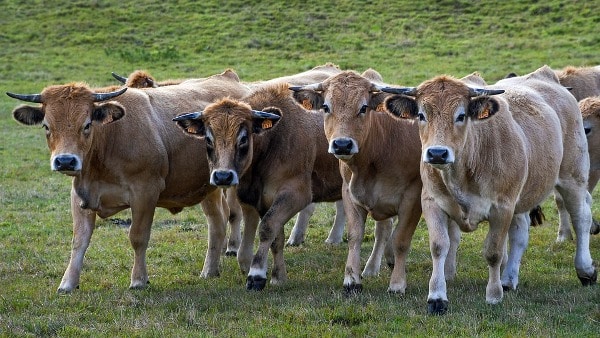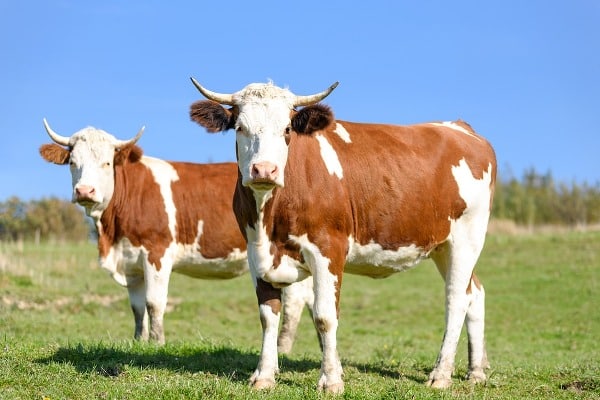
What is the fattening of cattle? Cattle fattening is a livestock production practice that reduces animal activities, thereby fattening cattle more quickly. Larger animals could be sold for more money on the market as they yield more meat.
Cattle fattening is one of the newly incipient action. The sector is emerging for employment and income generation for urban and pre-urban dweller, mainly, for those vacant farmers due to urbanization and cattle fattening association organized at small scale microfinance stage. Cattle fattening is an effective device for poverty alleviation and becomes a very important business sector simultaneously, attention needs to be focused on smallholder cattle fatteners with the private sector as engines of economic vitality. Cattle fattening farming business is a profitable business, and lots of people are making money all over the world by doing cattle livestock farming business. Cattle beef fattening occupies the feeding of beef cattle with a protein balanced, high-energy diet for a period of 90 days under confinement to increase live weights and develop a degree of finish and thus obtain improved grades at the abattoir.
You need the cattle to feed in order to start cattle beef fattening production. There are two options, either you use cattle from own herd, or you purchase the cattle from other farmers. You have to be careful when buying cattle to employ for cattle pen fattening. If you create the wrong decision, you will be at a loss before you even start the cattle fattening business.

When buying the cattle, you must be able to evaluate the potential for beef fattening of different types of cattle, in relation to the market price of different grades of beef. Factors to consider contain the breed of cattle, gender, maturity type, and age. This is because different types of cattle react differently to the beef fattening process. Some cattle are more fitting for cattle fattening than others. Money to buy cattle must be obtained at all times. A lack of funds to buy the cattle for beef fattening when prices are favorable is a lost opportunity to create a profit.
Cattle production is sensitive to the changes in the value and quantity of feed supply. They grow normally well when known the right feed. Adequate feeding is attained during grass pasture, grains, and roughages supplemented with protein, minerals, vitamins, carbohydrates, and fats. It will be highly profitable if feeds are obtainable in the locality. Feed ingredients such as rice straw, corn stover, copra meal, rice bran, and molasses should be abundant. Grass must be enough for the cattle to graze throughout the year.
Good quality feeder stock can get from your neighbors, livestock markets and commercial ranches. Those that are well adapted to your area must be selected.
The cattle fattening will have a capacity of 2500 heads of cattle, per batch and the objective is to procedure four batches per year with 90 days feeding period per batch. Stock mobilization can be arranged on a weekly source with 210 cattle per week. This level of production (10,000 heads per annum) is considered to be more realistic as it will enable better management and efficient utilization of resources and assets. The average weight of every animal after fattening is assumed to be about 300 kg.
Proper housing and equipment are very important in a successful backyard cattle rising. Cattle must be protected from extreme hot or cold conditions. The shade is very necessary. The typical shed under Philippine conditions is creating of light native materials. The roof is prepared of nipa or cogon mounted on either bamboo or ipil-ipil posts to protect the animals from extreme weather. The flooring can be prepared with concrete or gravel and sand. The average floor area must be about 4 X 7 feet.

To ensure a profitable income from fattening cattle, these below factors are to be considered:
Before we start raising cattle, it’s good we know and identify the types of cattle that will be fattened, to create it easier for us to know where it’s come from and how to raise the types of cows that exist.
The recommended breeds for fattening are given below:
What is the best feed for fattening cattle? Barley is the best grain for lot feeding cattle, but wheat, triticale, sorghum, maize, and oats can be used. Oats is not an ideal grain on its own for cattle fattening but can be used with any of the other grains. Hay or silage could be used as the roughage source.
It’s very essential that you provide the right quantity and type of feed to your cattle. The success of cattle fattening business depends on the ability of the cattle to gain weight and to make high-quality beef. These factors are affected by the value and quantity of feed. The good feeding techniques will ensure that the cattle will grow and utilize the feed efficiently and create good quality beef. This will maximize the profits of the cattle fattening farming business. Failing to correctly feed the cattle will lead to losses. The losses will be due to failure to meet the objective slaughter weights and beef quality grade.
There are companies which sell fattening cattle stock feeds. These are complete, balanced feeds, which are planned for fattening cattle in feedlots over 90 days. The stock feeds are high energy fattening meals which have all the nutrients necessary for ad lib cattle pen fattening. You can make your own homemade cattle beef fattening feeds. The quantity of feed consumed by the cattle daily will depend on factors such as live weight and age of the cattle. Generally, it averages between 8 to 15kg per head per day and 3.4% of a steer’s live mass per day. The average daily weight gain of cattle at 350Kg live mass is about 1.6Kg.
When you sell cattle to the butcher, they will slaughter it and grade the beef according to its quality. Beef is graded in two ways they are; quality grades for tenderness cattle, juiciness and flavor; and yield grades for the amount of usable lean meat on the carcass. After fattening cattle in feedlots for 90 days, its beef must fetch the highest quality grade. This grade is generally called Prime beef or Super beef. This is the beef, which fetches the top price on the market. The purpose of cattle fattening is to increase the weight of the cattle over 90 days and to raise the quality of the beef (higher grade of beef, more money when you sell).
Feed that is mixed with urea and molasses are useful for fattening. These items can be supplied in two ways they are; 1) By mixing with straw and 2) By mixing with concentrate.
Preparation of cattle feed by a combination of urea with straw:
Six months after the date of purchase, fattened cattle must weigh approximately 275 to 325 kilograms and, therefore, ready for market. Improper handling of animals before and during transport to livestock markets can cause serious injuries or even death of animals. In transporting animals or cattle, see to it that there are adequate bedding and loading facilities. Avoid overloading or overfeeding.